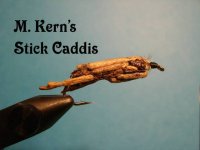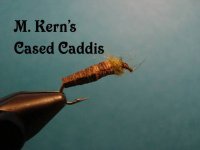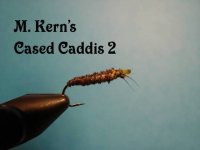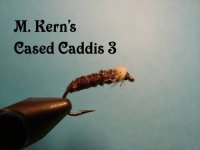The short answer is, they stay in their cases until they are ready to hatch. The pupa is vulnerable for 30 minutes or so when hatching. Also they concentrate in certain areas and use silk lines to "repel" for rock to rock. The absolute best book you can read is "Caddisflies" by Gary LaFountaine.
Here's some great info from an article I found:
Grannoms
By Rick Hafele
American Grannom is the common name for the Brachycentridae family of caddisfly. Western streams have a good diversity of the family with five genera and ten or more species known; all are stream dwellers.
The larvae, though cased, often become available to trout due to their common occurrence in stream drift and an unusual rappelling behavior. Dr. Norm Anderson, in a study of the Metolius River, found that Amiocentrus larvae were extremely abundant in beds of Ranunculus (up to 700 per sq. foot), and that they drifted in large numbers during the day. This activity makes them readily available to feeding trout.
Gary LaFontaine in his book Caddisflies (1981) refers to the rappelling activity of grannom larvae: the larvae moved downstream by attaching an anchor line of silk to a rock. Letting go of the rock, the silk line held them in the current. By lengthening the line they moved downstream to another rock. LaFontaine further refers to fishing with great success when using a weighted cased larva pattern on a white colored leader to imitate this behavior.
When mature, the larvae often congregate in dense colonies in moderate currents. This results in concentrated areas of pupal emergence.
By opening a case with tweezers, the pupa can be removed and the color and size accurately determined. The maturity of the pupa can be assessed from the color of the wingpads: a mature pupa's will be dark brown (almost black). When mature pupae are found you can expect to have good fishing with pupal patterns.
Most brachycentrid pupae do not emerge as quickly as many other caddis pupae. After cutting out of the larval case, they drift along the bottom for several feet, then start swimming towards the surface. It can take up to thirty minutes for the adult to emerge once the pupa reaches the surface film. This obviously presents an excellent opportunity for trout to feed on pupae drifting near the surface.
Once free of the pupal shuck, the adults fly quickly to streamside vegetation where mating occurs after several days. Gravid females then return to the water in the afternoon or evening to lay their eggs. This presents the next excellent opportunity for fish and fishermen.
Most females flop on the surface to release their eggs. Some dive underwater. In both cases they drift quietly compared to the active fluttering flights of other adult caddis. During heavy egg-laying flights, hundreds of spent females will be drifting in or just under the surface film, and they present the perfect opportunity for a dead-drifted low-riding pattern.
Hatches of brachycentrids can occur anytime from late March to Early October. All stages (larva, pupa, and adult) of the brachycentrids are available to trout.
Larva patterns include the Cased Caddis and Zug Bug in sizes 12-16. They should be fished close to the bottom, which is best accomplished with weighted flies and an upstream presentation. A strike indicator should be used to help detect the subtle strikes common with this method. Remember the larvae are often concentrated in shallow riffles or weed beds, so the best places to fish larval patterns will be below these habitats where there is good holding water for trout.
Pupae are available during emergence as they swim to the surface and drift in the surface film. An excellent tactic is to use a pupa pattern and fish it up-and-across so it sinks, then slowly rises to the surface. Dead-drifting a pupa pattern in the surface film can also be very effective. Good patterns to use when pupae are present are La Fontaine's Sparkle Pupa, Sylvester Nemes' Mother's Day Caddis Soft Hackle, and the Starling and Herl.
Like most caddis hatches, the actual emergence can be difficult to detect since it's hard to tell if the adults are flying off the water or returning to lay eggs. Most brachycentrid hatches occur in the afternoon. Also look for larval cases (with a pupa inside) that are attached to rocks. When you find lots of these, give a pupa pattern a try.
Adult patterns (the venerable Elk Hair Caddis, Deer Hair Caddis, Parachute Caddis, and CDC Caddis ) work well when the females are laying eggs. The naturals are extremely vulnerable as they drift on the surface or just under the film. A low-riding caddis adult pattern will generally work best for this group. Fish it on a dead drift, with either an upstream or downstream presentation.
Most adult activity occurs in the late afternoon or evening. When more than one caddis species is present at the same time (quite common on our rich Western streams). Watch the fish carefully: a steady deliberate rise will indicate they are taking slow-moving adults like the brachycentrids; a splashy rise means they are feeding on an emerging pupa or a fluttering adult.
--Rick Hafele
Link to source: http://www.west-fly-fishing.com/feature-article/0005/feature_138.php







